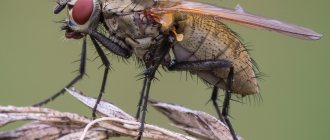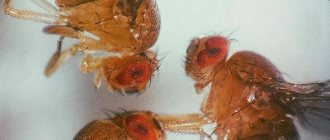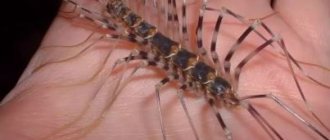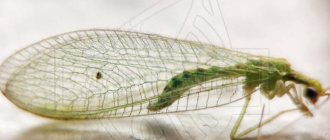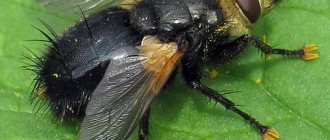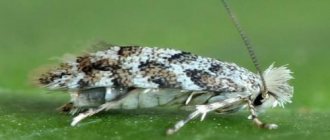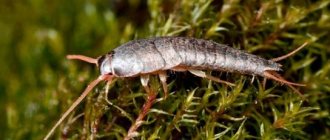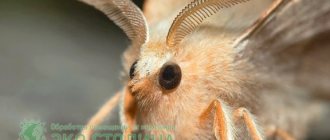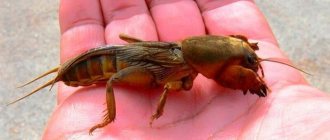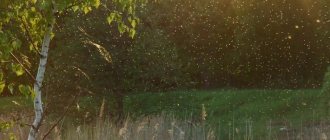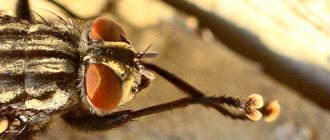Flies, like mosquitoes, are part of the order Diptera (Diptera), class Insects. They have two front wings, the hind wings have been transformed into balance organs - halteres.
Dipterologists (Diptera specialists) cannot name the exact number of species. It is known that 28 families of these insects number over 30 thousand groups.
Interesting fact. In a list of new species of plants and animals released by Australian scientists in 2022, some flies were named after heroes of the MARVEL multiverse.
Types and habitat of insects
Representatives of Diptera are distributed everywhere, except Antarctica and the Arctic zone, and live in the wild and near humans. The latter are called synanthropic and are divided into 3 groups:
- village: habitat – populated areas, for example, Musca domestica (indoor);
- semi-settlement: live and reproduce in settlements and in nature – Callphoridae (meat-bearing);
- pasture: develop in the droppings of cows and sheep on pasture - Wohlfahrtia magnifica (Wohlfahrtia).
Families and species
Dipterologists today distinguish the following groups:
Calliphoridae (Carrion)
- Calliphora vicina (blue redhead).
- Calliphora uralensis (blue meat).
- Lucilia sericata Mg. and Lucilia illustris Mg. (species of the genus green blowfly).
Area – Russia, Wed. Asia, Caucasus, Europe, North. America. The larvae of some species develop in carrion and cattle burial grounds no more than 1 meter deep, while others develop in cesspools. Adults feed on meat waste, feces, and fruits. You can meet them at bazaars and slaughterhouses.
Piophilidae (Cheese)
Scientists name about 100 species. Distributed everywhere, especially in areas where fishing is carried out. Fish, cheese, lard are the best places for the development of larvae, which grow up to 8 millimeters. If disturbed, they can jump up to 150mm.
Hippoboscidae (Bloodsuckers)
They live everywhere. There are about 800 species. Adult flies are blood-sucking. With paws equipped with serrated claws, they cling to birds, deer, dogs and other animals. Sometimes they attack people, causing skin inflammation.
Sarcophagidae (Grey meats)
Distribution: Europe, Asia, North Africa. There are approximately 3 thousand species. It reproduces on corpses, feces, manure, and food waste. Adult flies eat feces, meat, and fruits.
One of the most dangerous representatives of the family is the Wohlfart fly. She lays larvae on open wounds. By eating living tissue, parasites cause severe pain.
Oestridae (Gadflies)
Pasture insects. Maggots develop on the body of livestock and humans.
- Hypodermatinae (Subcutaneous). Doesn't live only in the Far North. The larvae penetrate the skin into the body and move through the tissues, causing skin lesions.
- Gasterophilinae (Stomach). Lives everywhere. Larvae enter the gastrointestinal tract with food and lead to inflammation of the stomach.
- Oestrinae (Cavity, nasopharyngeal). The larvae enter the mucous membranes, and from there into the pharynx and frontal sinuses, leading to miasma.
Drosophilidae (Drosophila)
Distributed everywhere. Midges can be seen in flower pots and bird nests. There are 1.5 thousand species. They feed on rotting plants. Maggots develop in spoiled vegetables and fruits, compotes, juices: apple, cherry, grape.
The most famous type. There are more than 5 thousand species in the world. The most common in Russia are:
- market;
- autumn fireweed;
- Room, house.
House fly
Another name is room. There are 2 subspecies found on the territory of the Russian Federation: Musca domestica domestica (common) and Musca domestica vicina (southern).
Homeland - steppe regions Wed. Asia, but today it is widespread everywhere. Active mainly during the daytime. The life cycle is 8-20 days. Acceptable temperature is 23-25 degrees Celsius.
Important. Some specimens can survive the winter in an unheated room in an inactive state and continue activity as soon as the temperature rises to 10 degrees.
Insects are carriers of gastrointestinal diseases, tuberculosis, worms, and eye diseases. May cause serious tissue damage (myiases)
Morphology
Three sections of the body: chest, abdomen, head - are densely covered with hairs. The body of an adult is 6-8 mm, gray in color. The lower part of the abdomen is yellowish, along the top of the chest there are 4 longitudinal stripes.
On the chest there are three pairs of five-segmented limbs. The last segment has suction cups that help it move along walls and ceilings. The organs of taste and touch are also located here.
There are large compound eyes on the head, followed by 3 simple ocelli. The distance between the eyes is smaller in males than in females. In front are antennae, which are designed for orientation in space and sense of smell.
Licking-sucking oral apparatus - proboscis and jaws. Flies can only consume liquid food; solid food is first dissolved in saliva. Therefore, contrary to speculation, they cannot pierce human skin and drink blood. During the period of egg maturation, the female switches to protein food. How do flies appear?
Pusher flies
Pusher flies are small predatory insects that are found in almost all parts of the planet. These flies received this name because of their bizarre behavior. Before mating, during courtship, male tuskers gather in flocks and begin to perform peculiar dances. In this interesting way they attract the attention of females. In countries with a particularly warm climate, such performances can be observed throughout the summer.
In addition to the pleasant spectacle of dancing, males gain favor with females by bringing gifts. Usually these are dead small flies of other species, which the female eats after mating. But quite often male pushers turn out to be very greedy gentlemen. In the most unceremonious way, they take their gifts from the female in order to use them to attract another female for mating.
The body of the pusher fly is gray-brown in color and up to 15 mm long. The belly has 5–7 ring-shaped divisions. When at rest, the wings fit tightly to the back. The head is small and round with a long proboscis hanging down. The eyes of males are usually as close to each other as possible. In the oral apparatus of the fly there are lower and upper jaws in the form of four bristles. Insect larvae live in the ground.
If your animals suffer from horsefly bites, then try various remedies for horseflies to combat them: chemicals, traps or proven folk methods. The Hessian fly can often be found on winter wheat, as it lays its eggs on this plant. How to deal with this pest of grains, read in this article.
A dog can become infected with lice eaters from another dog or simply by walking outside. What kind of parasite is this and what the consequences of infection may be, read the article at the link.
Stages of development
The number of stages is influenced by the type of development of the fly - viviparous or oviparous.
Most often it occurs in the following sequence:
- egg;
- larva (3 periods);
- chrysalis;
- imago (adult).
There is no first phase in viviparous species. The larvae develop in the abdomen of the female. A prominent representative is the gray blowfly.
Most insects are oviparous: houseflies, botflies, fruit flies and others.
Diptera are very fertile. The female can lay more than 100 eggs, and reproduction continues throughout her short life. During the year, 9-20 generations can change.
Scientists: Flies become drunk without sex
Flies are just like people. Sexual deprivation in male fruit flies can cause an “alcohol diet,” in other words, a binge, with alcohol acting as a reward substitute. This is stated in an article published in the prestigious scientific journal Science.
Troy Tsars, a professor of biology at the University of Missouri Research, notes that understanding why fruit flies (Drosophila melanogaster) resort to ethanol when they are rejected by a female during a mating attempt could help combat addiction in humans.
“Understanding the molecular and genetic mechanisms that control the need for reward in fruit flies has the potential to influence our understanding of alcohol and drug addiction in humans, as previous studies have clarified the similarities between neurotransmission in fruit flies and in mammals,” says Tsars.
A group of biologists led by Galit Shohat-Ophir from the University of California at San Francisco studied the processes that occur in the nerve centers of male fruit flies after the female rejects his advances.
Laying eggs
How are houseflies born? It all starts with mating. Males use sounds made by their halteres to attract females. Individuals copulate.
For oviposition, the female chooses places that are most favorable for this stage of fly development: manure, human waste, carrion, cesspools, rotten meat, spoiled fruits and vegetables. Through the ovipositor, which is located at the end of the abdomen, it can lay 70-120 white eggs approximately 1.2 millimeters long at a time. Depending on the weather, representatives of the order Diptera are capable of laying up to 2 thousand eggs throughout their lives.
For a note. Not all insects manage to survive at all stages of development, hence such high fertility. Next, postembryonic development begins, which occurs in stages.
Hoverfly
Hoverflies, or syrphids, are in many ways similar to wasps - both in external characteristics and behavior. They can also hover in flight without stopping their wings. In summer they can often be found in your garden or vegetable garden near umbelliferous or asteraceous plants. But unlike stinging wasps, hover flies are completely harmless. Its body is black and yellow striped with two transparent wings. The head is semicircular with large dark brown eyes. Adult insects feed on flower nectar. The fly got its name because of the sound, similar to the murmur of water, that it makes when hovering in flight.
Hoverfly larvae can live in various environments: in water, in wood, in anthills.
The most favorable place for hoverflies is the accumulation of aphids, since aphids are the main food for the larvae. They also feed on the eggs of some insects and spider mites.
Syrphid eggs are translucent oval with a pinkish, greenish or yellowish tint. The larvae appear 2–4 days after the female lays her eggs. Their body is elongated
wrinkled, narrowed in front and widened behind.
The larva is very lazy. Its physical activity is observed only when hunting aphids. It rises, sways from side to side and suddenly attacks the victim, immediately absorbing it. Then, in search of the next portion of food, it moves, rolling its body mass from one end to the other. The older the larva, the more voracious it becomes. As a result, during 2–3 weeks of its development, it eats up to 2,000 aphids.
An adult fly can lay 150–200 eggs at a time. In total, for the entire season (spring–summer–autumn) there are 2 to 4 generations. The hoverfly is a very useful insect for the garden, as its larvae destroy a huge number of aphids that are harmful to fruit trees. Many gardeners specifically create favorable conditions for the reproduction of this fly by planting dill, carrots, parsley and other umbrella plants in their garden.
How does the larva develop?
The embryo is freed from the shell, and a white legless larva appears, which many mistakenly call a worm or caterpillar. Length - about 13 millimeters, pointed in front, truncated in back.
The formation of the larva takes place in 3 stages. On the third, the yellowish-white body becomes shiny and spines appear on it.
Maggots feed on the environment where the eggs were laid. They do not have a digestive system, so they absorb processed food after releasing a caustic substance.
The cycle is completed in 3-25 days, for some, for example, the humpback, up to 4 weeks. The maggot finds a cool place where metamorphosis begins - the pupa is born.
Pupa stage
The most passive period in fly breeding. The membrane hardens and a puparium is formed. Pupae cannot tolerate heat (over +40 degrees) and high humidity. If the ground does not dry out for a long time after rain, they die. Therefore, during the rainy seasons there are few flies.
Under favorable conditions, the tissues in the cocoon disintegrate and changes in the whole organism occur. After about 5 days at a temperature of +25 degrees, an adult individual appears - an imago, which after 36 hours is capable of reproducing offspring.
By summing up the time allotted by nature for each stage, you can find out how quickly house flies reproduce: from one week to a month.
Features of the reproductive organ
There are growths and formations on the male genitals. Charles Darwin tried to describe their function by examining an individual through a microscope. The scientist believed that they were needed to more successfully persuade a female to have sexual intercourse, as well as to get rid of the sperm of the previous partner.
Modern dipterologists have experimentally proven that education is needed in order to attract partners to copulation and not slip off when they mate.
Features of female reproductive organs
Each of the two large ovaries is a connection of oviducts, which are divided into segments in which follicles develop (in which the egg is formed). The process begins in the pupal stage and ends in the adult stage.
When the female lays eggs, the accessory glands connect to the oviduct and secrete a secretion with which the eggs are glued to the nutrient medium.
Sense organs
Most of the fly's head is occupied by the eyes. Each of them consists of a large number of segments - facets. For example, a housefly has about four thousand of them. Therefore, the vision of these insects is called mosaic. Thanks to this structure, the fly instantly picks up any movements. That's why she's so hard to catch.
There is also one pair of antennae on the head. With the help of these organs, the fly orients itself in space, determines the direction of movement, and distinguishes odors even at a distance of about 500 meters.
Viviparous species
This group includes almost all blowflies, including the Wohlfart fly, as well as the famous killer fly, the tsetse.
How do viviparous (carrion, blow) flies reproduce? They lay larvae of the first stage in fish, meat, feces, corpses, as well as in abrasions and wounds on the skin of people and animals. After 5-7 days, the larvae hide in the ground, away from light and heat, and turn into a pupa, and then into an adult.
On a note. Carrion species have been well studied, and this is successfully used by criminologists: if larvae are found on a corpse, then the time of death can be determined.
How to name a male fly
flies are usually female...at a certain period, some females turn into males
They are hermaphrodites, what the hell..
Who would have thought
and you expect to hear a not quite decent word (that’s what people call a male fly)
No. I am looking for the truth and I am very grateful to you for the clarification
bastards. prevent you from expressing yourself
yeah, what the heck, everyone knows that
call it shorter, there are one-syllable vulgar words for this damned male or dragonfly
Flies, but as a joke it turns out obscene, the Internet does not allow such a word
Well, you don’t say “women” to a man.
These insects apparently have no gender
Someone said that they are asexual. But where do the Muschata come from then?
This is necessary. Having so much free time and not knowing what to do with it
Yes, here one flew in and it was not clear how to contact him so that he would fly away. Otherwise I'll knock out your teeth. However, he will die of hunger
call it Ershik, for example, or Mushonok, or at least give it the nickname Astrik
Do you propose to use a nickname instead of a specific name?
then formulate the question correctly. and forget about the thieves
then formulate the question correctly. and forget about the thieves
I DON'T KNOW. YOU SHOULD PROBABLY DO NOTHING IF YOU ARE INTERESTED IN A MALE FLY.
Not a male, but questions of the great and mighty Russian language. The language of Pushkin and Dobrolyubov.
I think it's also a fly. Not flies. Although some people call their husbands that.
call him any male name and teach him to respond to it
Source
Gadflies
In nature, there are 30 genera, including 176 species. They are often confused with horseflies, bumblebees and bees.
Appearance
Body length is 9 mm-2.5 cm. An adult has a wide head with large eyes and short antennae. There is no proboscis, or it is reduced. The legs are massive and short. The abdomen is round or conical. The entire body is covered with coarse hairs. The life of gadflies is short - approximately 22 days.
Classification
- Hypodermatinae (Subcutaneous). Adults lay eggs on the hair of domestic animals: horses, rams, cows. The hatched larvae penetrate the skin and move through the tissues. Before entering stage II, they gather under the skin, forming inflamed fistulas. Through them the larvae get to the surface.
- Gasterophilinae (Stomach). There are 2 ways for larvae to enter. Some females lay eggs on leaf food, and they enter the animal with food. Others - on the head and chest. The cattle, by biting and licking the skin, transfer the eggs into the digestive tract.
- Oestrinae (Cavity, nasopharyngeal). Females release eggs in flight, which land on the mucous membranes of the eyes and nose. People often suffer unwittingly: as a result, conjunctivitis (very dangerous for a child) and other diseases can develop.
Some scientists classify Cuterebrinae, the American subcutaneous gadfly, as a separate subfamily. They most often parasitize mice, hares, gophers, etc.
Danger to humans
Some subcutaneous species, such as Dermatobia hominis, attack humans. Bodfly larvae penetrate the skin, causing a lot of suffering. Cases have been recorded where a person died from the penetration of parasites.
Gadflies are inventive in attack: some distract, others attack. Their legs are soft, so you may not notice when a fly lands on your skin. But its bite is very painful, burning. Redness appears in this place and itching begins.
Human blood serves as a breeding ground for eggs. The hatched larvae, looking for a way out, move upward. If they get into the brain, death is inevitable.
What is the name of the fly's husband?
If we take the fairy tale by Korney Chukovsky as a basis, then it is quite possible to say that the husband of a fly is a mosquito, but...
This can only be found in a fairy tale by this author.
There are both female and male flies, so it would be more correct to say, a male fly and a female fly, or a female fly and a male fly.
No answers like Big Blue MUCH are implied.
It’s just that a person more often than not gives distinctive names to certain individuals based on their gender. For example, there is no special name for male bees; we call both males and females zebras, also Samocales, where there are no “whales” or “walruses”, etc. The same goes for Beluga whales, both males and females, Chum salmon, Flounder and many others. the others are all called the same.
First of all, a fly can have many husbands or none at all. And for example, Chukovsky married a fly to a mosquito. And the mosquito's name was Komar-Komarovich. True, this is from another fairy tale. Well, in reality, if a fly had a real husband, then he could be called by different names, such as Vasya or Misha.
Having seen your question, I began to look for an intelligible answer to it on the Internet. And the only information I found was that the husband of a fly has no special names. They are simply called: either a male fly or a male fly. But I also like the answers of other authors.
It can only be called humorously, but there is no such literary word, because “fly” is only feminine, and many animals and insects do not have a name for a male individual.
So joke all you want, but in biology class call him “male fly.”
Clattering flies. Just Muh. Only I am tormented by vague doubts that they (the flies) are once and for all “married”)))) They are confused, in my opinion))) I have never seen them soar in pairs. Wherever he sits, there is the husband))
Do they have husbands?)) I remember this joke. A man of Caucasian nationality says to one girl:
It turns out that "MUH"
Apparently, for some reason this word was not invented in the masculine gender. There was probably no need for this.
Rather, the word began to come into use even when there was no emphasis on the field of the fly.
The fly's husband's name is KOMAR.
The fairy tale by Korney Chukovsky “The Fly Tsokotukha” came to mind. There, a mosquito saved a fly from a spider and proposed marriage to the fly Tsokotukha. A cool and instructive fairy tale will need to be re-read
Well, what a fly she wasn’t, she will remain a fly. Regardless of gender. It turns out that the fly is the wife, and the fly is the husband. Only flies have no idea about marriage. They can only fly, eat, sleep and shit, annoying other people with their presence.
We lived with my husband’s parents for more than 5 years, then we moved with our small children to a rented house, very cold, the children were small, the youngest child was 1 year and 5 months. My son was 5 years old. They left, having quarreled. It was difficult, all the pleasures were on the street, water from the water pump. But I never regretted that we left. I can’t blame my mother-in-law, I’m not a gift either, I was very hot-tempered, my nerves were not in order. Relations returned to normal within a week. Therefore, the only correct solution may be to live alone. As for the “terrible person”, don’t get too excited! How could such a “terrible person” raise such a husband for you?! She’s just not your mother. By the way, I’m also now a mother-in-law and mother-in-law. I have a wonderful relationship with my daughter-in-law and son-in-law because they live separately.
I offer the following answers:
There could be many reasons for this. Firstly, did you want to sleep with him before, or were you just fulfilling your “marital duty”? In this case, nothing supernatural happened, we get tired of any work, try to diversify it. If the erotic sensations from sex have disappeared, then you need to listen to yourself: perhaps you recently gave birth to a child or are unwell, or maybe your mother-in-law came to visit and stayed for two years?
Not only do I not consider this day a holiday, I laugh at it. As well as over the Russian version. These are vivid examples of how Saint’s Day (Valentine’s, Peter’s and Fevronia’s) can be taken to the point of absurdity. But if I see that this is important to a person, then I play along with him, why ruin the mood and create a conflict?
Therefore, I can recommend turning to your husband with the following proposal: “Darling, I understand that this is not important for you, but it is important for me. Please fulfill my little whim and give me some charming little thing on February 14 as a sign that you are pleased to be my husband.”
Source
Meaning in nature
Despite the fact that flies are annoying insects that poison human life, they play an important role in nature.
- Representatives of Diptera are one of the links in the food chain. Let’s assume that this is a favorite treat for the flycatcher.
- The larvae process rotting waste, cleaning the planet and returning minerals to the soil.
- Many types of flies pollinate plants. For example, in spring and summer you can find a hoverfly or an ear fly feeding on the nectar of flower stalks.
Interesting fact. During the war, it was noticed that wounds on which fly larvae were deposited healed faster. The thing is that maggots secrete digestive juice, which destroys bacteria and dead tissue.
External structure
A fly is an insect that has a typical structure for representatives of this class of animals. The body consists of three sections - head, thorax and abdomen. Six walking legs are attached to the middle one. The housefly is small in size - up to a centimeter.
On the head there is one pair of antennae, eyes and a sucking mouthparts. Therefore, the fly is not able to eat solid food. The insect searches for liquid, which it draws in using its proboscis. The fly liquefies solid substances. To do this, the insect regurgitates onto the food. It is the vomit that contains digestive enzymes that make food suitable for absorption.
Prevention
Insects harm gardens, vegetable gardens, and park areas; young cuttings, leaves, and shoots, which people lovingly grow, especially suffer from the larvae.
In addition, flies are carriers of dangerous diseases. Breeding these insects is not worthwhile, so you need to follow simple rules:
- carry out regular cleaning;
- Take out the trash can every day, which must always be closed;
- do not leave food waste on the table;
- seal fruits, vegetables, meat, fish or put them in the refrigerator;
- monitor the condition of mosquito nets.
Knowing the patterns and characteristics of the reproduction of flies, you can choose effective means of combating them.
How to get rid of flies in an apartment: 4 rules
First of all, it is necessary to identify and thoroughly wash the areas where flies breed. Most often this is a trash can, rotting food, onion peels. This measure will help eliminate most of the eggs and larvae. After this, you can begin to destroy the surviving individuals. To prevent your work from going down the drain, take note of four rules.
- High quality cleaning. Deprive insects of comfortable living conditions. Wash cabinets, walls and floors regularly with a vinegar solution. Avoid accumulation of garbage and food waste.
- Safety. Give preference to environmentally friendly methods. Only if these prove to be ineffective, resort to the use of chemicals.
- Sealing of housing. Strengthen mosquito nets or gauze on windows, vents, and balcony doors. Close the gaps near the windows, under the eaves, and in places where the cable exits.
- Prevention. After getting rid of arthropods, it is necessary to take measures to prevent their reappearance.
